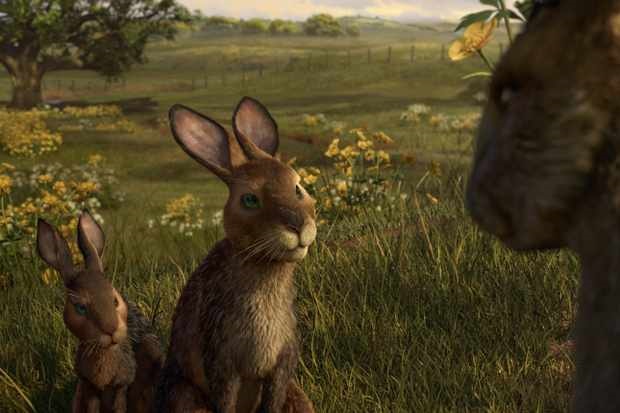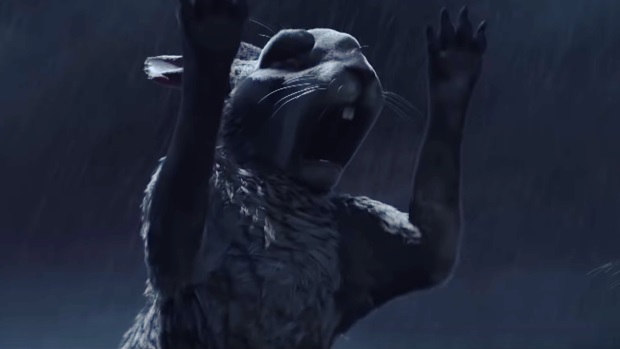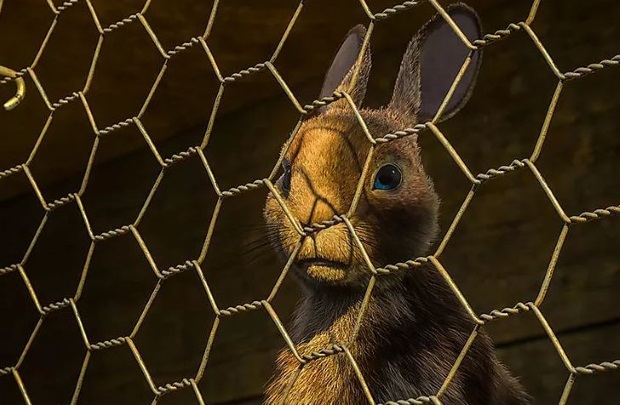BBC/Netflix Watership Down: as traumatising as ever
The macabre delights of Watership Down will be introduced to a new generation with a BBC and Netflix co-production airing this Christmas
Many readers will have been scared silly by the 1978 film adaptation of Richard Adams’ famous novel Watership Down. You don’t come across many films based on childrens’ novels that feature premonitions of blood-soaked fields, rabbits brutally ensnared and evil animal overlords attacking their own kind until they are nothing but ragged, shivering husks.
Yet, despite or perhaps because of these horrifying scenes, Watership Down is a British institution. With its overt environmental message about the damaging effects of the actions of man on our British soil, it’s a film close to many a Brit’s heart. Yes, it’s trippy. Yes, you wonder if it was all some kind of horrible fever dream… but we love the characters and its dark but heartfelt message.
In a Q&A following the premiere of the first feature-length episode of the new Watership Down series at the BFI Southbank, the creators and cast shared their thoughts about this harrowing animated revamp of the classic story, which will air this Christmas on Saturday the 22nd and Sunday the 23rd of December.
“It’s quite a rare thing as a producer that everybody you approach either says ‘yes’ or ‘that’s my favourite book ever’”, muses executive producer Rory Aitken on approaching the creative team and cast for this project. “We had that with almost every cast member”. It’s very clear that there is a lot of love for the story and the original film in the room. According to producers Rory Aitken and Josh Varney, Taron Egerton begged them to get involved in this new adaptation and didn’t mind which part he was given. He plays El-Ahrairah, the rabbit prince who, much like in the 1978 film, is introduced along with the mythology of the sun god Frith at the show’s start.
James McAvoy, who plays the central role of Hazel alongside Nicholas Hoult’s Fiver, is also a huge fan of Martin Rosen and John Hubley’s film adaptation. “When I got the email from Rory [Aitken] about doing this I was actually wearing my Watership Down t-shirt at that time. I had to take a picture and send it to him. I was like ‘check it out man!’” he laughs, before lifting up his black jumper to reveal his well-worn fan t-shirt.

There’s no question that this version is just as scary, if not scarier, than the original but screenwriter Tom Bidwell insists that he didn’t go to any special effort to make the story darker than the novel or the story’s first on-screen depiction. “You just write the story. You don’t have anything else in mind, you’re just serving Richard Adams’ wonderful world”, he explains.
This sparks a conversation about the release of the original film, and while Nicholas Hoult admits to loving the warped and twisted world he was introduced to, McAvoy seems to remember seeing a horrifying poster at his local cinema of a rabbit being garrotted. A children’s film hasn’t been marketed the same before or since. Naturally, McAvoy used the film’s dark themes as his inspiration for a devised contemporary movement piece he did in drama school.
What makes the new animated series equally traumatising to the film? Frankly, it still comes as a shock when a lovely little bunny hopping through the lush green fields of the British countryside has a harrowing vision of the future. While the first film dealt with Fiver’s premonition of the destruction of their warren in a somewhat surrealist fashion, gradually spreading a blob of deep red across the Down and depicting a digger scraping bloodied wounds into the soil, director Noam Murro employs some brilliant sound effects in this adaptation and horrifyingly realistic visuals to suggest what will happen within the warren itself.
With the discordant and unsettling sound of rabbits flailing and panicking, we see their blurred figures leaping towards us, as 3D as you’ll get without the glasses, as they desperately try to escape. It’s a visceral experience, with CG animation bringing a similar sense of dread to audiences who’ve come to expect very different things from television since the 1970s. We’re invited inside the warren to see the final moments of a group of fear-stricken, unsuspecting creatures while the actions of a construction company above drive them from their home.

There are several other such visions experienced by Fiver throughout the series and, while these sudden and jarring scenes are arguably the most haunting of the show, that’s not to imply for a moment that the rest of the series is a comfortable ride. The music dramatically conveys the desperate plight of the forever-hunted group of rabbits, while horrifying highlights include a violent bird attack on the group of escaping rabbits in a gothic graveyard and the skin-crawling eeriness of a desolate warren that the group happen upon, echoes of the dead ringing throughout the vast and bare network of underground burrows.
There are scenes in the series that positively shriek of folk classics like The Blood On Satan’s Claw and The Wicker Man, with the visuals of the natural world and the unnaturally cruel acts of other rabbits suggesting that there is something rotten and evil within the earth itself, perhaps even a powerful force that is worth worshipping to save oneself from the danger and death that lies outside the burrow.
Was I worried for the children in the screening? Absolutely I was. For a twenty-something horror convert this was a thrill, but it is an unrelentingly dark show, in every sense of the word, with a surprising number of death threats between its main cohort of characters and the ever-present threat of being maimed or murdered by other animals and, most disturbingly of all, their own kind.
Of course, this is the same plot as the novel and film. The story isn’t new and, in fact, the series keeps to the same chronology as the film with very few alterations. It is just a new kind of traumatising; the kind that cleverly recreates the initial horror experienced by those who saw the 1978 film in the cinema as a child. Whether it is too much to handle for a child is down to the individual, but there does seem to be some inner conflict experienced by the show as to who the series is really for. Is this one for the old fans? Or is it time to give the next generation sleepless nights, too?

For director Noam Murro, getting the setting right meant a great deal to the creative team. Julia Adams, the daughter of Richard Adams, even sent him photos taken of the countryside where she grew up to help ime recreate the idyllic, pastoral scene that is under threat in the story. “There was a lot of research work. It was very important to me, and to everybody [on the team] that the British countryside is represented properly. It’s at the heart of what the story is about. From the way it looks to the kind of plants living there, it had to be authentic”.
It does have the tangible feel of the home counties, with the likely intentional effect of making the horror feel closer to home. We’re shown the upsetting world of creatures under threat from what humankind is doing to them, so while the children in the room will be hiding their eyes as a rabbit dramatically bleeds out in a snare, the adults will be troubled by the utter mess we’ve made of the wonderful, natural world that Frith gave us. Merry Christmas, everyone!
Watership Down starts on BBC One on Saturday the 22nd of December at 7pm.